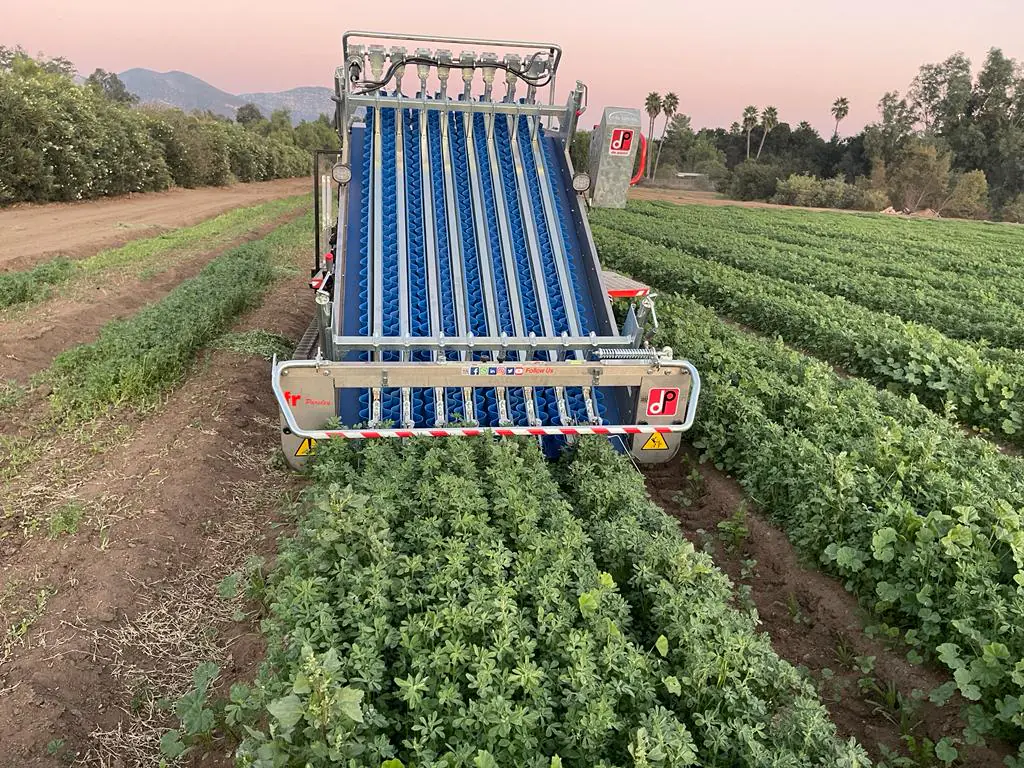2 steps towards efficient coriander harvesting
Coriander (Coriandrum sativum) cultivation is widespread in many regions thanks to its numerous culinary and medicinal uses. Efficient coriander harvesting is crucial to guaranteeing the quality of the end product and profitable crop growing. This article explores four basic steps towards optimized coriander harvesting and provides answers to various queries on how to grow and care for this plant.
Step one: how to cultivate coriander?
Coriander is an annual plant that prefers a temperate climate and well-drained soil. To encourage uniform growth and facilitate mechanical harvesting, it is planted in rows at specific spacing distances. It is essential to prepare the soil properly and to make sure it is well drained and fertile, with a pH between 6.2 and 6.8. The seeds are planted directly in the field in 20-30 cm spaced rows and at about 1-2 cm planting depth. To avoid extreme temperatures, the best time for planting is in spring or autumn.
Step two: how to care for the plants
Regular irrigation, pest control and protection against parasites and diseases are important for healthy plants. Coriander needs constant watering, especially during active growth but avoid excess water and water-logging, which could damage the roots. Fertilizing with nitrogen-rich fertilizers is recommended to encourage leaf growth.
Coriander harvesting
Coriander can be harvested by hand or with the aid of industrial machines. Use of industrial harvesters is preferable for large-scale cultivation since it increases efficiency and reduces operating costs. Industrial harvesters are designed to rapidly and accurately cut and harvest the coriander plants. These machines can be equipped with accessories that form bunches of coriander and place them on elevator belts or directly into boxes.
Industrial harvesters provide numerous benefits. They are much faster than harvesting by hand. They also reduce plant damage and protect the integrity of the product. The machines are also versatile. Thanks to their interchangeable accessories they can be used for harvesting both coriander and parsley. When these machines are used, harvesting begins by preparing the plants to make sure their leaves and seeds are well developed. The harvester cuts the plants at the base, forming bunches that are tied with elastic bands and placed in boxes to be transported or sold.
Preservation and use of coriander seeds
Coriander seeds are precious since they can be used for future planting or for culinary purposes. The seeds are collected when the plants have dried and the seeds have matured. They must have turned brown before they can be collected. The plants are then cut and allowed to dry out in a dry place. The stems of the plants are beaten to remove the seeds, which are separated from any impurities and then stored in a cool, dry place.
Discover our FR38 harvester
Discover our FR38 harvester and optimize your coriander harvesting process: agile and compact, these machines are ideal for harvesting vegetables and fresh-cut herbal plants.
FR38 stands out for speedy operation and a compact size. It ensures precise movements and ease of use in every situation, even in the most difficult conditions. The machine becomes even more powerful and easy to handle in the version on wheels, all of which potentially the steering type.
Contact us to obtain further details about the most suitable machine for your crop.

